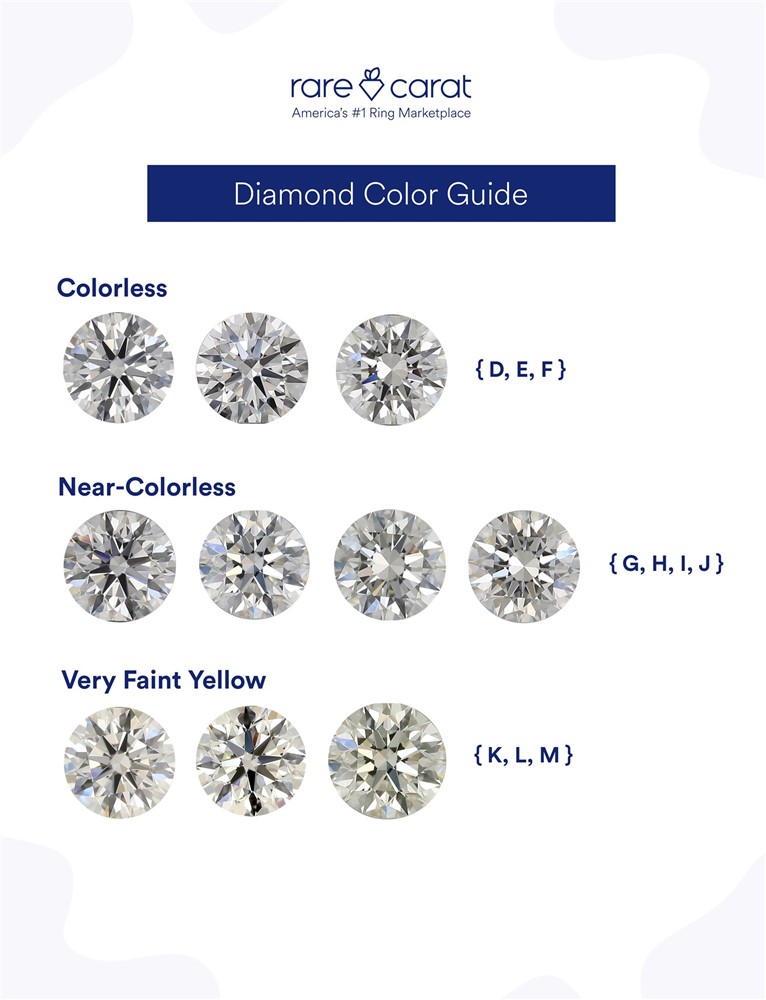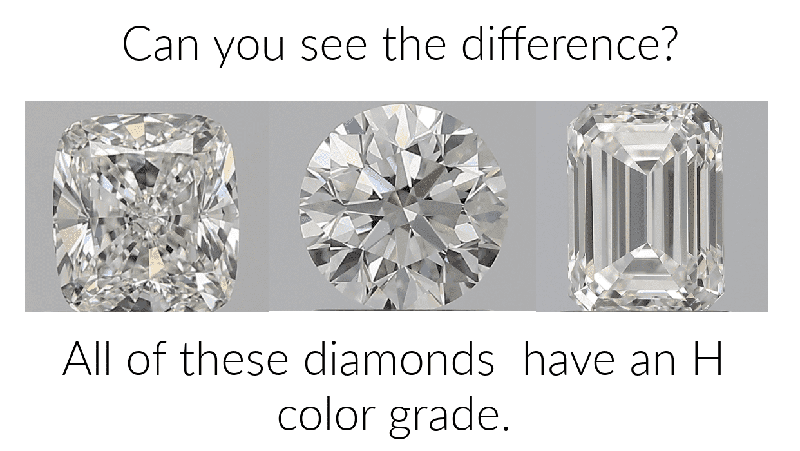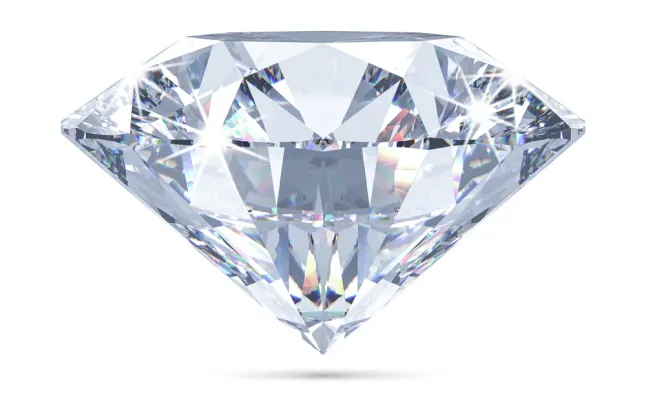Are H Colored Diamonds Good? | Rare Carat
Diamonds in the upper half of the near-colorless range (GHIJ) are excellent buys because they appear white without the price premium associated with colorless diamonds (DEF). H color diamonds are particularly appealing to savvy buyers. Diamond color, like the other 4Cs, is an important factor to consider when purchasing a diamond. While color has an impact on price, there are a lot of other factors that can help you decide which color grade is best for you.
What is the color grading scale?

The color scale developed by the Gemological Institute of America (GIA) is the industry standard for diamond grading. The GIA color grades for diamonds range from D (colorless) to Z (light yellow or brown). H color diamonds fall somewhere in the middle of that spectrum, which is a good thing. What's the reason? It provides the best of both worlds: A low-cost stone that appears almost colorless. In fact, diamonds of G and H color are among the most popular choices because they appear almost identical to diamonds of D, E, and F color (but are much less expensive). When viewed from the side, most H color diamonds appear white (a.k.a the table or top of the diamond). Having said that, H color diamonds do have a yellow tinge, but it's usually difficult to see unless you're in specific lighting (or comparing them to D or E color diamonds side by side).
Which shapes look better with an H color?
While the yellow or brown in an H color diamond is almost impossible to see, it is still present - and certain diamond cuts or metals can highlight (or reduce) the extra color. Because there is less contrast, yellow gold, for example, can make diamonds with a slight yellow undertone appear more white. H color diamonds offer excellent value in a variety of cuts, including the emerald, oval, and pear shaped diamonds. Steer clear of a cushion cut diamond if you choose to go with an H color grade. Although this stunning diamond shape is excellent at concealing inclusions, the faceting only enhances the color. A princess cut is also not recommended because its square body can easily expose the yellow tint. Also, note that any inclusions in a poorly cut H color diamond will become visible to the naked eye. If you're set on a princess or cushion cut H color diamond, going for a higher clarity grade is a must. In this case, SI2 clarity for oval, pear, and princess cut is the way to go.

H color: A great look for less!
While D colorless diamonds are desirable because they are thought to be of higher "quality," they can become incredibly expensive at larger carat sizes. H color diamonds provide an excellent balance of aesthetics and affordability. They almost always appear colorless when set in a ring because they are in the near-colorless range of the diamond color scale. At the same time, they are significantly less expensive than diamonds graded D, E, or F. An H color diamond can cost anywhere from 15-30% less than a comparable D color grade. This means that choosing an H color diamond over a colorless diamond can save you hundreds or thousands of dollars, allowing you to choose a more beautiful setting or simply save money!
Overall, the H color grade is an excellent choice for the vast majority of diamonds. Check out our selection of H-color diamonds and let us know if you have any questions!

